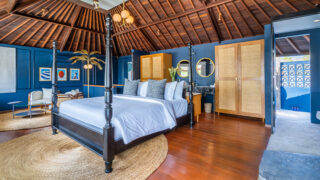With 7,107 islands to explore, a coastline extending for more than 36,000 kilometres, more than 3,000 beaches and plenty of people with a cheerful and hospitable nature, the Philippines is not a place where you’re likely to get bored! Here’s what we suggest for making the most out of your visit.
#1 Eat like a local
Filipinos love food – to the extent that they’ve even added a couple of extra official snack times into the day’s proceedings (the morning and afternoon merienda). So, savouring some of the country’s traditional dishes is a must on any visit.

Considered by many to be the unofficial national dish, adobo is a popular concoction of meat, seafood or vegetables marinated in vinegar, soy sauce and garlic, browned in oil and then simmered in the marinade. Try the lamb adobo at Abe, in Taguig City, Manila.
Bagnet is another must-try Filipino recipe – even if it is kind of sinful. It’s made from any cut of pork, most commonly pork loin or pork belly, and is deep-fried twice for crispiness. Try it with pinakbet (stewed vegetables seasoned with fish paste).
Round off dinner with a halo-halo (translation: “jumble jumble”). This is a refreshing concoction of shaved ice and condensed milk, topped with any combination of sweetened beans, candied fruit, syrup and jelly (not unlike an ice kachang).
#2 Get festive

Venture off the beaten path and experience the wonders of the Western Visayas region through Iloilo, a city with an interesting past. Known as the Queen City of the South in its glory days, Iloilo was the last Spanish-colonial capital of the Philippines when Manila surrendered to the US. Remnants of this history include the American period customs building, the Aduana, as well as stunning churches such as The Parish of St Anne, the only gothic church outside Manila. It also hosts one of the most colourful and vibrant parties in the country, the Dinagyang Festival, an annual celebration held on the fourth weekend in January. The whole city is awash in colour, music and dancing, to honour Santo Niño, the child Jesus.
#3 Go tropical

The Philippines has some world-class stretches of sand; Camiguin, El Nido, Coron, Puerto Galera and Caramoan are just a few of the names you’re likely to see when you’re researching the country’s best beach destinations. But none of them has captured the imagination of tourists like Boracay. Around 300km south of Manila (and relatively easily reached by a short domestic flight from the capital or Cebu, followed by a bus connection), Boracay is a small dumbbell-shaped island whose famed White Beach is as much about its soft sand and palm trees as it is the party vibe. There are hotels, souvenir shops, restaurants and bars, though things have been considerably quieter recently than they were in the Boracay heyday, thanks to a six-month shutdown/clean-up in 2018, followed by the forced hiatus of COVID.
In our opinion, beach-lovers are better off making for Palawan, the Philippines’ western-most archipelago. There’s not a lot there for night owls, but from a nature perspective it’s really got the wow factor.
#4 Hit the bike trails
Looking for a taste of action and adventure? Cebu’s varied terrain is ideal for a range of activities including hiking, jeep tours, rock climbing and mountain biking. A trip to Olanga Island just off the coast allows for more sedate cycling, ideal for the whole family, but there are still plenty of trails for more hardcore bikers to follow.

#5 Belt out a tune
Karaoke is big in the Philippines, and for good reason: a Filipino was instrumental in its development (Roberto Del Rosario, who in 1975 created a kind of equipment prototype that he named the “Sing Along System”).
But there’s more to the nightlife than karaoke bars – particularly in Manila. Makati, in the city centre, is the first port of call for many tourists; it’s there you’ll find the enormous Greenbelt complex of shopping malls and eateries – arguably the most salubrious entertainment district in the country. Close to the airport is Resorts World Manila (a sister property of Singapore’s Resorts World Sentosa), with plenty of drinking spots, live music and gaming. For something more eclectic, head to Quezon City, further north in Metro Manila, where the vibe is a little more young and laid-back; most of the action is around Timog Avenue and Eastwood City.

#6 Ride in a jeepney

One of the many legacies of the US presence in the Philippines in World War II was a bunch of leftover jeeps. Locals adapted these vehicles into a unique form of public transport: the jeepney. It mightn’t be the fastest or most comfortable way to travel, but a trip in one of these garishly decorated and jam-packed vehicles – which are kind of like a cross between a bus and a tuk-tuk – is definitely an experience worth trying! To pay the fare, just hand coins to the person next to you and they’ll pass it along up to the driver. They are being phased out in Manila but likely to remain in the rural areas.
This article first appeared in Expat Living. You can purchase copies of our monthly magazine and guides or subscribe so you never miss an issue!





